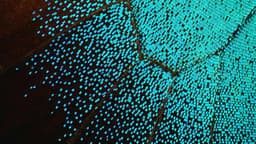Nearest Neighbor Search in AI
Nearest neighbor search (NNS) is a key method in AI and machine learning that finds the closest or most similar data points from a dataset based on specific criteria. It is widely used for recommendation systems, pattern recognition, and data compression. This technique is all about finding the best match for a query from existing options.
Understanding the Basics
How does nearest neighbor search work? It is similar to asking a librarian for a book similar to your favorite one. In AI, data points replace books, and the library equates to a database or dataset.
Each item in the dataset is represented by a set of features or dimensions. In a music recommendation system, for example, features could include genre, tempo, and lyrics. The goal is to find the item with features that closely align with the query item.
How Nearest Neighbor Search Works
-
Defining Distance: The first step is defining how to measure similarity or 'distance' between data points. The most common method is Euclidean distance, measuring the straight-line distance between two points. Other methods like Manhattan distance or cosine similarity can also be applied.
- Euclidean Distance Formula: $\sqrt{(x_2 - x_1)^2 + (y_2 - y_1)^2}$
- Manhattan Distance Formula: $|x_2 - x_1| + |y_2 - y_1|$
-
Searching the Dataset: After defining the distance measure, the algorithm searches the dataset for the data point closest to the query. This can be done through exhaustive search or more efficiently using tree structures like KD-trees or algorithms like Locality-Sensitive Hashing (LSH).
-
Optimization Techniques: Searching for the nearest neighbor can be slow in large datasets. Various algorithms and data structures can speed this up. For example, KD-trees organize points in a way that segments space into regions, reducing the number of necessary comparisons.
Applications of Nearest Neighbor Search
Recommendation Systems
Have you ever watched a movie you loved and wanted to find something similar? Nearest neighbor search acts like a knowledgeable friend, suggesting movies similar to your favorites. This approach is applied in music streaming services and online retail platforms as well. By analyzing your past preferences, the system recommends items that share characteristics like genre and ratings.
Pattern Recognition
In pattern recognition, how does nearest neighbor search function? It works like a detective matching fingerprints. When you speak to your phone and it understands your command, or when a computer recognizes objects in photos, it uses nearest neighbor algorithms to compare input to a known database. This technology aids in facial recognition, handwriting detection, and identifying patterns in medical data.
Clustering
What is clustering? It's the process of organizing data into groups of similar items. Nearest neighbor search helps identify which data points should belong together. This is useful in market research for understanding customer segments, in biology for classifying species, and for organizing complex data for easier analysis.
Challenges and Considerations
Curse of Dimensionality
What does the curse of dimensionality mean? With more features considered, determining true similarities becomes more challenging. As you increase dimensions, points begin to appear equidistant, complicating the search for nearest neighbors, which can reduce efficiency and accuracy.
Choice of Distance Metric
How important is the choice of distance metric? It defines how to measure similarities between items. If the metric does not align with real-world concepts, the results may be misleading. For example, using straight-line distance for city navigation may not yield practical results due to road layouts.
Scalability
What happens as datasets grow larger? Just like finding a book in an expanding library, locating the nearest neighbor can become more complex and time-consuming. Efficient algorithms and smart data structures are crucial for handling large-scale data quickly and effectively.
Nearest neighbor search is a fundamental aspect of AI that underlies many technologies we use daily. It enhances our online search experiences and helps us discover new music and products. The basic idea focuses on finding the closest match from available options, making it a vital technique in advancing AI systems. As AI evolves, the methods and applications of nearest neighbor search will also grow, continuing to play an important role in technology.
(Edited on September 4, 2024)












